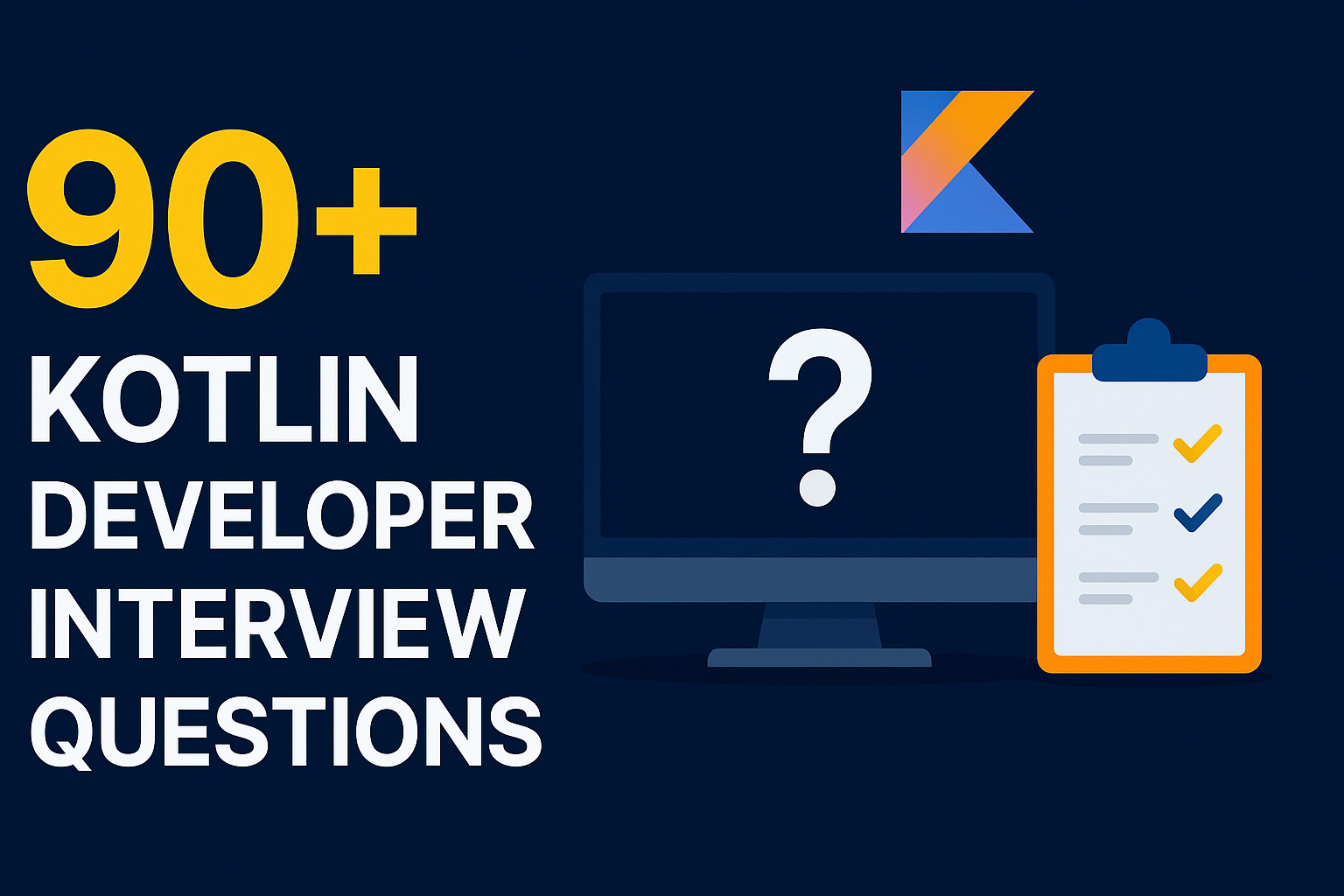
Most candidates don’t realize that many skilled data analysts fail interviews not because they can’t write SQL but because they struggle to explain how they have handled real workplace challenges. Landing a data analyst role isn’t just about proving you can write queries or build dashboards. Employers want to know how you’ve navigated messy situations, collaborated under pressure, and turned data into business insights.
According to the World Economic Forum’s 2025 report, analytical thinking remains the top core skill employers seek, with seven out of ten companies calling it essential. It’s followed by resilience, flexibility, leadership, and social influence, reflecting how adaptability and collaboration are now as critical as technical skill.
That’s where behavioral interview questions come in. They reveal the person behind the pivot tables. If you’ve ever walked out of an interview wishing you’d had a better story ready, you’re not alone. Behavioral questions catch many candidates off guard because they require specific examples, not generic promises.
Why Data Analysts Have to Prepare for Behavioral Interview Questions
Technical skills can get you till the interview, but behavioral competencies keep you in the interview rounds. Employers use behavioral questions to assess problem-solving ability, teamwork, and communication skills, traits that define success in real work environments.
When you're asked to describe a time you cleaned a messy dataset or handled a tight deadline, hiring managers aren't just checking off boxes. They're predicting how you'll perform when people challenge your findings, when data sources conflict, or when you need to translate complex information for non-technical teams. Past behavior is the best indicator of future performance, and your stories provide that evidence.
Data analysts work at the intersection of technology and business. You might have the sharpest analytical mind in the room, but if you can't communicate findings clearly or collaborate across departments, your impact will be limited. Behavioral interview questions probe whether you've navigated these real-world complexities before, and how you've grown from those experiences.
Preparing for these questions also demonstrates professionalism and self-awareness. Candidates who reflect on past challenges, articulate what they learned, and connect their experiences to the role signal maturity and readiness. In competitive hiring markets, this edge matters.
But here’s the good news, with the right preparation, you can turn these questions into your strongest asset.
How to Apply the STAR Framework in Behavioral Interviews
Situation: Begin by explaining the scenario briefly. Mention the project, the challenge, or the business context that set the stage for your work. Keep it short and easy to follow.
Task: Define your objective or the problem you were responsible for solving. Clarify what was expected from you specifically, not just what the team was doing.
Action: Walk through the exact steps you took. Highlight your reasoning, the tools or methods you used, and how you collaborated or made decisions. This section carries the most weight in your answer.
Result: Wrap up with outcomes. Share how your contribution made an impact, whether it improved performance, solved a recurring issue, or delivered measurable results.
When you balance your story with roughly 15% Situation, 10% Task, 60% Action, and 15% Result, your answers stay clear, concise, and focused on what interviewers care most about — your impact and approach to problem-solving.
20 Data Analyst Behavioral Interview Questions and Answers
Now that you understand why behavioral questions matter, let's dig into the specific questions you're likely to face. Below are 20 common behavioral questions data analysts encounter, along with concise model answers to guide your preparation. Use these as templates, but make sure to adapt them with your own genuine experiences.
1. Describe a time you worked with a messy dataset. How did you approach cleaning it?
I inherited a customer database with over 50,000 records that had inconsistent formatting, duplicate entries, and missing values across multiple columns. I needed to clean this dataset within a week so our marketing team could segment customers for an upcoming campaign. I started by examining data completeness and identifying patterns in the issues, then removed duplicates, checked for outliers using statistical methods, and applied uniform formatting across all fields. I documented each step in a cleaning script so the process could be replicated and validated by peers. The cleaned dataset enabled accurate customer segmentation, and my documentation became the team standard for future data cleaning projects.
2. Tell me about a mistake you made in analysis. How did you handle it?
I delivered a quarterly sales report that incorrectly calculated regional performance because I had filtered out certain transaction types. I needed to correct the error and rebuild trust with the leadership team who had already reviewed the incorrect figures. I identified the issue within hours of sending the report, immediately communicated openly with everyone affected, corrected the calculations, and sent an updated version with a clear explanation of what went wrong. I then implemented quality checks like peer reviews and automated validation rules to catch similar errors. Leadership appreciated my transparency and quick response, and the new validation process prevented three potential errors in subsequent reports.
3. Have you ever missed a deadline? What did you do?
I was working on three simultaneous projects when unexpected data quality issues added two days to my timeline on the highest-priority analysis. I needed to manage expectations and deliver the most important work without completely dropping other commitments. I communicated proactively with my manager as soon as I realized the delay, explained the data issues, prioritized what mattered most, and rescheduled lower-impact deliverables with team consensus. I also adjusted future time estimates to build in buffer time for data issues. We delivered the priority project with complete accuracy, and my manager appreciated the early warning, which let her adjust other timelines accordingly.
4. How do you handle tight deadlines or pressure?
Our executive team requested a competitive analysis with only 48 hours' notice before a board meeting. I needed to gather data from multiple sources, analyze it, and create presentation-ready visualizations under extreme time pressure. I broke the project into manageable components, prioritized based on what would most impact the board's decision, and kept my manager informed of progress every few hours. I focused on the most relevant metrics rather than trying to be comprehensive. I delivered a focused analysis on time that directly answered the board's questions, and the exec team used it to make a strategic pricing decision that quarter.
5. Explain a situation where your findings contradicted business assumptions. How did you deliver the message?
Our product team believed a new feature was driving user engagement, but my analysis showed it was actually correlated with decreased retention. I needed to present findings that contradicted the team's expectations without creating defensiveness. I presented evidence clearly using visualizations that showed the correlation, focused on data integrity by explaining my methodology, and proposed practical recommendations for A/B testing to confirm causation. I framed it as an opportunity to learn rather than as criticism. Despite initial pushback, the product team appreciated the honesty. They paused the rollout, ran proper tests, and discovered the feature needed significant changes before full launch.
6. Give an example of explaining complex analysis to a non-technical audience.
I completed a customer lifetime value analysis using complex statistical modeling, but needed to present findings to our sales team who had no analytics background. I had to make the methodology and implications clear enough that the sales team could use the insights in their daily work. I used simple visuals like bar charts instead of technical outputs, avoided jargon completely, and illustrated business impact in terms of revenue per customer segment. I created a one-page summary with clear action items. The sales team immediately understood which customer segments to prioritize, increased focus on high-value segments, and we saw a 15% increase in average deal size that quarter.
7. Describe a time you influenced a team to adopt your recommendation.
Our team was manually pulling the same reports every week, spending about 4 hours per person on repetitive work. I wanted to convince the team to adopt an automated reporting system I'd built, but several team members were hesitant about changing their workflow. I provided clear rationales backed by time-savings data, addressed concerns about learning new tools constructively, and involved hesitant team members in refining the dashboard design. I offered to train everyone individually. The entire team adopted the automated system within a month, we saved 16 hours per week collectively, which freed everyone up for more strategic analysis work.
8. Share a situation where creativity helped solve an analytical problem.
Our leadership wanted to understand customer behavior patterns, but traditional segmentation methods weren't revealing anything new or useful. I needed to find a fresh approach to segment customers that would provide real business value. I developed a new visualization combining purchase frequency, product categories, and seasonal patterns in a heat map format that revealed previously unseen trends. Instead of demographic segments, I created behavior-based segments that showed when and why customers bought. This creative approach identified three new customer segments, and marketing built targeted campaigns for each, resulting in a 25% increase in campaign response rates.
9. Have you worked with a challenging colleague? What did you do?
I was collaborating with a senior analyst who repeatedly dismissed my suggestions in meetings and made it difficult to contribute to our shared project. I needed to find a way to work productively with this person without escalating the conflict or compromising the project quality. I scheduled a one-on-one conversation where I listened actively to their perspective, clarified our shared goals for the project, and sought common ground. I focused on how we could achieve objectives rather than on personality differences, and made sure to prepare extra thoroughly for our meetings. Once we aligned on goals, the working relationship improved significantly. We completed the project successfully and even collaborated well on two subsequent projects.
10. How do you stay updated with data tools and industry trends?
The data analytics field changes rapidly, with new tools and techniques emerging constantly. I need to stay current so my skills remain relevant and I can bring the best solutions to my team. I set aside time weekly to attend webinars, work through online certifications, participate actively in data analyst forums, and follow industry blogs. I also practice new techniques on personal projects so I understand them deeply before applying them at work. This continuous learning helped me introduce Python automation to my team last year and recently identify a new visualization tool that cut our dashboard creation time in half.
11. Tell me about a project you're most proud of. Why?
Our marketing team was spending budget across all customer segments equally, but we had no data on which segments were actually profitable. I proposed and led a customer segmentation project to identify where marketing dollars would have the highest return. I analyzed two years of customer data, built a profitability model by segment, and identified three high-value segments that represented 60% of revenue but only 30% of our customer base. I created a presentation showing the opportunity and recommended shifting budget allocation. Marketing adjusted their campaigns to focus on high-value segments, which boosted marketing returns by 20% within six months and became the foundation for our ongoing strategy.
12. Describe a time you had to quickly learn a new tool or skill.
My team was spending hours each week manually creating the same recurring reports, and I saw an opportunity to automate the process using Python scripting, which I'd never used before. I had two weeks to learn it and build a working solution before the next quarterly reporting cycle. I used online tutorials and documentation, practiced daily on small automation tasks, and asked for code reviews from a developer friend. I applied the skill immediately to our reporting process, building scripts that pulled data automatically and formatted it into our standard templates. The automation saved the team 12 hours per week and became a template for other recurring processes.
13. How do you make sure your data analysis supports business decisions?
I was assigned to analyze website conversion rates, but the initial request was vague about what decisions this analysis would inform. I needed to ensure my work would actually be useful and not just interesting data. I set up a meeting to clarify objectives upfront, asked specific questions about what decisions were pending, and aligned my analysis with what leadership needed to know. I communicated impact in business terms rather than technical metrics and scheduled regular check-ins to ensure my work stayed relevant as priorities shifted. The final analysis directly informed our website redesign decisions, and three of my recommendations were implemented within a month.
14. Can you recount a time you managed conflicting priorities?
I was simultaneously handling month-end reporting, a time-sensitive executive request, and an ongoing customer analysis project, all with overlapping deadlines. I needed to deliver quality work on all three without dropping any commitments. I immediately reached out to everyone involved, explained the situation transparently, and negotiated deadline adjustments where possible. I assessed which tasks had the highest business impact and tackled those first, then communicated my updated timeline to all parties. By being upfront about capacity and keeping everyone informed, I met all commitments without compromising quality, and my manager appreciated the proactive communication.
15. How do you measure the success of your work?
I completed a detailed pricing analysis for our product team, but I wanted to understand if my work actually made a difference beyond just being delivered on time. I needed a way to evaluate whether my analysis provided real value. I followed up with the team to evaluate how satisfied they were with the clarity and usefulness of my findings. I tracked whether my recommendations were implemented and monitored the measurable business outcomes like revenue changes and operational improvements over the following quarter. The pricing changes I recommended led to an 8% revenue increase, which validated that the analysis delivered tangible business value.
16. Describe a time you contributed to process improvement.
Our team of five analysts was each creating weekly reports using different templates and methods, which made it confusing for leadership to compare data across teams. I saw an opportunity to standardize our approach. I mapped out everyone's current process, identified common elements, and designed standardized templates that maintained flexibility while ensuring consistency. I presented the proposal in a team meeting, incorporated feedback, and created documentation for the new process. The standardized approach reduced errors, saved each analyst about 45 minutes per week, and made training new team members much smoother since everyone followed the same system.
17. What steps do you take before starting analysis on a new dataset?
I received a customer behavior dataset from our CRM team for analysis, but jumping straight into analysis would have been premature. I needed to understand the data thoroughly before drawing any conclusions. I started by assessing the data's origin and asking the CRM team how it was collected, checked for quality issues like missing values or inconsistencies, evaluated completeness across different time periods, and verified its relevance to the business problem I was solving. I also met with people to clarify exactly what questions they needed answered and what decisions the analysis would inform. This groundwork prevented me from going down analytical dead ends and ensured my final work directly addressed the business need.
18. Have you ever disagreed with your manager's approach? What did you do?
My manager wanted to analyze customer satisfaction by simply averaging survey scores, but I knew this approach would mask important segment differences and lead to wrong conclusions. I needed to share my concerns without seeming insubordinate or dismissive. I scheduled a private meeting where I respectfully presented alternative approaches backed by examples from past projects, explained the potential risks of averaging across diverse segments, and showed how segmented analysis would provide more useful insights. I framed it as wanting to give leadership the most accurate picture possible. My manager appreciated the constructive input, we collaborated on a revised approach that combined both methods, and the segmented analysis revealed insights that changed our customer service strategy.
19. Tell me about a time you received difficult feedback. How did you respond?
A senior analyst reviewed my dashboard and told me it was technically correct but too complex for our audience to understand quickly. The feedback stung because I'd spent significant time on the technical accuracy. I needed to accept the criticism and improve rather than getting defensive. I listened openly to their specific concerns, asked clarifying questions about what would make it clearer, and thanked them for taking time to review it honestly. I then simplified the dashboard based on their suggestions, removing technical jargon and focusing on the core metrics that mattered most. The revised version was adopted across three departments, and that feedback taught me that clarity matters more than showing off technical sophistication.
20. Describe how you communicate project progress to your team.
I was leading a three-month customer segmentation project with multiple people depending on my analysis to inform their own work. I needed to keep everyone informed without overwhelming them with constant updates. I established a communication rhythm with brief weekly email updates that highlighted what I'd completed, what was in progress, and any blockers I'd encountered. I created a simple dashboard showing progress against key milestones and shared it in our project folder. I also tracked results against our original goals and flagged any scope changes immediately. This transparency kept everyone aligned, prevented last-minute surprises, and built trust that I had the project under control.
Common Mistakes to Avoid
Even strong candidates stumble during behavioral interviews. Knowing these pitfalls ahead of time helps you sidestep them when it counts. Here's what to watch for:
Getting Too Technical Without Showing Impact
While your SQL wizardry is impressive, interviewers want to hear about business results. Did your analysis increase revenue, reduce churn, or improve how the team operates? Connect your technical work to outcomes that matter to the organization.
Telling Vague or Generic Stories
Answers like "I'm a team player" or "I handle pressure well" don't cut it. Specific examples with concrete details make your responses memorable and credible. Use real situations from your past roles, the more specific, the better.
Skipping the STAR Structure
Without structure, stories ramble and lose impact. The STAR framework (Situation, Task, Action, Result) keeps your answers focused, organized, and easy for interviewers to follow. Practice structuring your stories this way until it feels natural.
Blaming Others Instead of Taking Ownership
If you made a mistake or missed a deadline, own it. Interviewers respect accountability and care more about how you learned and improved than they do about finger-pointing. Show growth, not excuses.
Forgetting to Share What You Learned
Mistakes happen. What matters is growth. Always close a story about failure with what you learned and how you applied that lesson moving forward. It shows maturity and self-awareness, two things every employer values.
Overlooking Virtual Interview Specifics
Whether you're interviewing in person or on video, preparation stays the same, but delivery adjusts. For virtual interviews, test your tech beforehand, minimize background distractions, and remember that maintaining eye contact means looking at the camera, not the screen.
Tips to Prep for Data Analyst Behavioral Interviews
Preparation transforms nervousness into confidence. Here's your game plan for getting ready:
Reflect on past projects and prepare clear stories using the STAR method
Identify 5 to 7 experiences that showcase different skills like solving problems, working with teams, communicating clearly, and showing leadership. Write them out and practice delivering them naturally until they flow.
Practice translating technical concepts into simple, business-friendly language.
You'll often need to explain your work to non-technical people. Rehearse converting jargon into clear, relatable terms. Use analogies and visuals when possible. If you can't explain it simply, you don't understand it well enough yet.
Research the company's business model and industry challenges.
Tailor your examples to align with the company's priorities. If they're focused on customer retention, emphasize stories about churn analysis or customer segmentation. Show them you understand their world.
Anticipate questions about collaboration, communication, and flexibility.
Data analysts don't work in silos. Be ready to discuss cross-functional projects, how you've resolved conflicts, and times you've pivoted based on feedback or changing requirements. Real work is messy, show you can handle it.
Prepare specific examples that demonstrate impact, initiative, and problem-solving.
Quantify results whenever possible. "I reduced reporting time by 30%" hits harder than "I improved efficiency." Numbers make your contributions tangible and memorable. They also show you think in business terms.
Do a mock interview with a friend or tool.
Saying your stories out loud to another person reveals awkward phrasing, gaps in logic, and areas where you're not as clear as you thought. Get feedback and refine your delivery. AI mock interview tools are also a good place to experinece how a real interview environment looks like.
Opt for tools to fight the interview anxiety.
Having interview an anxiety is very common but in this new age of AI, we have ai tools to give us the edge and overcome the insecurities, tools like live ai interview assistance are one of the recent and smart invention in AI, try using interview copilot tools to provide you with real time ai support in the interview.
Conclusion
Behavioral interview questions aren't obstacles, they're your chance to showcase the full range of your capabilities as a data analyst. Technical skills might land you the interview, but your stories about collaboration, communication, and how you handle challenges will land you the job.
The key is preparation. Reflect on your past experiences, structure your answers using the STAR method, and practice delivering them with confidence. Avoid common pitfalls like generic responses or blaming others, and always connect your work to business impact.
With the 20 questions and model answers in this guide, you've got a solid foundation. Now make it your own. Tailor these examples to your genuine experiences, research the company you're interviewing with, and walk in ready to tell your story with conviction. When you do, you won't just be another candidate talking about dashboards and queries. You'll be the person they remember, the one who showed them exactly why you're the right fit for their team.
Start preparing today. Pick three stories from your past work, write them out using STAR, and practice saying them out loud. That's your first step toward turning your next interview into your next job offer.
Table of Contents
Related articles

How to Answer "How Do You Plan To Achieve Your Goals?"
Master your response to "How Do You Plan To Achieve Your Goals?" with our expert tips and strategies. Ace your next interview!

90+ Kotlin Developer Interview Questions
Master your next interview with this ultimate list of 90+ Kotlin developer interview questions covering core concepts, Android development, coroutines, and real-world scenarios. Perfect for freshers and experienced candidates.

How to Answer "Do You Have Any Pet Peeves?"
Learn how to answer the tricky interview question "Do you have any pet peeves?" with expert tips and examples to impress your interviewer.

How to Answer "If You Were A Color, Which Would You Be And Why?"
Discover how to answer the intriguing interview question, "If you were a color, which would you be and why?" with confidence and creativity.

How to Answer "What Is Your Superpower?"
Learn how to answer "What is your superpower?" with confidence. Get tips and examples to showcase your unique strengths in any interview.


.avif)
